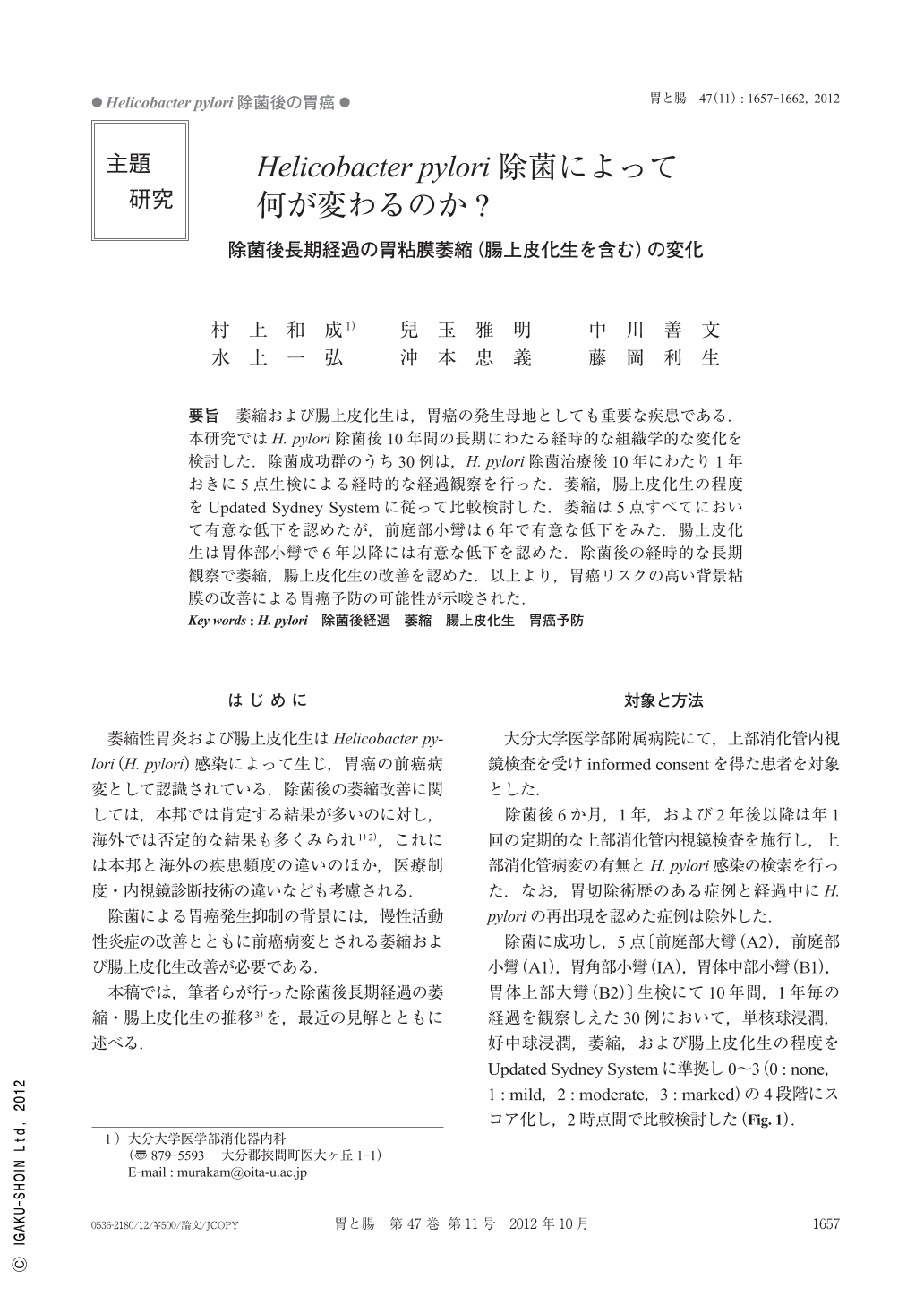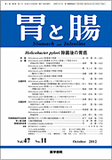Japanese
English
- 有料閲覧
- Abstract 文献概要
- 1ページ目 Look Inside
- 参考文献 Reference
要旨 萎縮および腸上皮化生は,胃癌の発生母地としても重要な疾患である.本研究ではH. pylori除菌後10年間の長期にわたる経時的な組織学的な変化を検討した.除菌成功群のうち30例は,H. pylori除菌治療後10年にわたり1年おきに5点生検による経時的な経過観察を行った.萎縮,腸上皮化生の程度をUpdated Sydney Systemに従って比較検討した.萎縮は5点すべてにおいて有意な低下を認めたが,前庭部小彎は6年で有意な低下をみた.腸上皮化生は胃体部小彎で6年以降には有意な低下を認めた.除菌後の経時的な長期観察で萎縮,腸上皮化生の改善を認めた.以上より,胃癌リスクの高い背景粘膜の改善による胃癌予防の可能性が示唆された.
Atrophic gastritis and IM(intestinal metaplasia)are well known as precancerous lesions of gastric cancer. The present study evaluated the gastric mucosa for 10years after H. pylori eradication. Patients with successful eradication underwent follow-up endoscopic examination every year prospectively. Biopsy specimens were taken from five points of the stomach as recommended by the updated Sydney system. The courses of 30patients were able to be observed every year for 10years after successful eradication. Atrophy score at all five points were significantly reduced half a year to 6years after eradication. IM score of the lesser curvature of the corpus continued decreasing gradually and showed a significant decrease 6years after. Within 10years after H. pylori eradication, atrophy at all sites and IM in the lesser curvature of the corpus gradually and significantly decreased. These results suggest that the improvement of gastric atrophy and IM might have some kind of association with the reduction of gastric cancer occurrence.

Copyright © 2012, Igaku-Shoin Ltd. All rights reserved.


